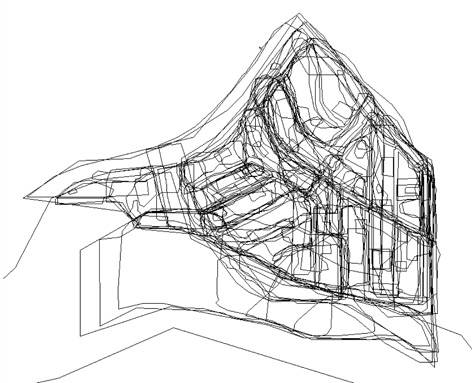
ETL Tools to Analyze Diagrams’ Performance: Favoring Negotiations in Geodesign Workshops
Abstract
Geodesign is a set of methods to shared construction of alternative futures to a territory. Among the existing methods, Steinitz’s framework proposes analytical and propositional steps. In analytical step the goal is to compose maps identifying vulnerabilities and attractiveness of the area. In propositional step the users design diagrams of projects and policies to the place to be negotiated between the participants. To analyze the diagrams could help support the negotiations. The study presents the construction of methods, using ETL Tools, to describe the characteristics of the diagrams, mainly the locational and topological similarities. The similarities can be used to indentify projects or policies that are equivalent, complementary or conflicting, helping the negotiation process, reducing the time spent in unnecessary discussions.
Keywords
Full Text:
PDFReferences
Araújo, R. P. Z., Moura, A. C. M., Nogueira, T. (2018). Creating collaborative environments for the development of slum upgrading and illegal settlement regularization plans in Brazil: the Maria Tereza neighborhood case in Belo Horizonte. International Journal of E-Planning Research (IJEPR), 7(4).
Arnstein, S. R. (1969): A Ladder Of Citizen Participation. Journal of the American Institute of Planners, 35(4), 216-224.
Brail, R. K., & klosterman, R. E. (2001). Planning Support Systems: Integrating Geographic Information Systems, Models, and Visualization Tools. ESRI Press, California, 443 p.
Casagrande, P. B. (2018): O Framework Geodesign aplicado ao Quadrilátero Ferrífero, Minas Gerais - Brasil: A Geologia como base de Planejamento de futuros alternativos para o Quadrilátero Ferrífero. Master Dissertation. Instituto de Geociências, UFMG.
Czepkiewicz, M., Jankowski, P., & Młodkowski, M. (2017). Geo-questionnaires in urban planning: recruitment methods, participant engagement, and data quality. Cartography and Geographic Information Science, 44(6), 551-567.
Flaxman, M. (2010). Geodesign: Fundamental Principles and Routes Forward. Talk at GeoDesign Summit.
Hanzl, M. (2007). Information technology as a tool for public participation in urban planning: a review of experiments and potentials. Design Studies, 28(3), 289-307.
So, F. S. (1979). Practice of local government planning. Published in cooperation with the American Planning Association by the International City Management Association.
Lee, D. J., Dias, E., & Scholten, H. J. (Eds.). (2014). Geodesign by integrating design and geospatial sciences (Vol. 111). Springer.
Linstone, H. A., & Turoff, M. (Eds.). (1975). The delphi method(pp. 3-12). Reading, MA: Addison-Wesley.
Lynch, K. (1960). The image of the city (Vol. 11). MIT press.
Saad-Sulonen, J. (2012). The role of the creation and sharing of digital media content in participatory e-planning. International Journal of E-Planning Research (IJEPR), 1(2), 1-22.
Smith, R. W. (1973). A theoretical basis for participatory planning. Policy sciences, 4(3), 275-295.
Tuan, Y. (1974). topophilid. Columbia University Press.
Tuan, Y. F. (1990). Topophilia: A study of environmental perceptions, attitudes, and values. Columbia University Press.
Zyngier, C. M.; Casagrande, P. B.; Moura, A. C. M.; Ribeiro, S. R. (2017). O Geodesign como plataforma para co-design: Estudo de Caso Maria Tereza. In: XXI Congreso Internacional de la Sociedad Iberoamericana de Gráfica Digital, Concepción. Blucher Design Proceedings. São Paulo, Editora Blucher, 3, 403-409.
Refbacks
- There are currently no refbacks.
Copyright (c) 2018 Christian Rezende Freitas, Ana Clara Mourão Moura
DISEGNARECON
ISSN 1828 5961
Registration at L'Aquila Law Court no 3/15 on 29th June, 2015.
Indexed in SCOPUS. Diamond Open Access. All papers are subjected to double blind peer review process by qualified reviewers.
Journal founded by Roberto Mingucci
